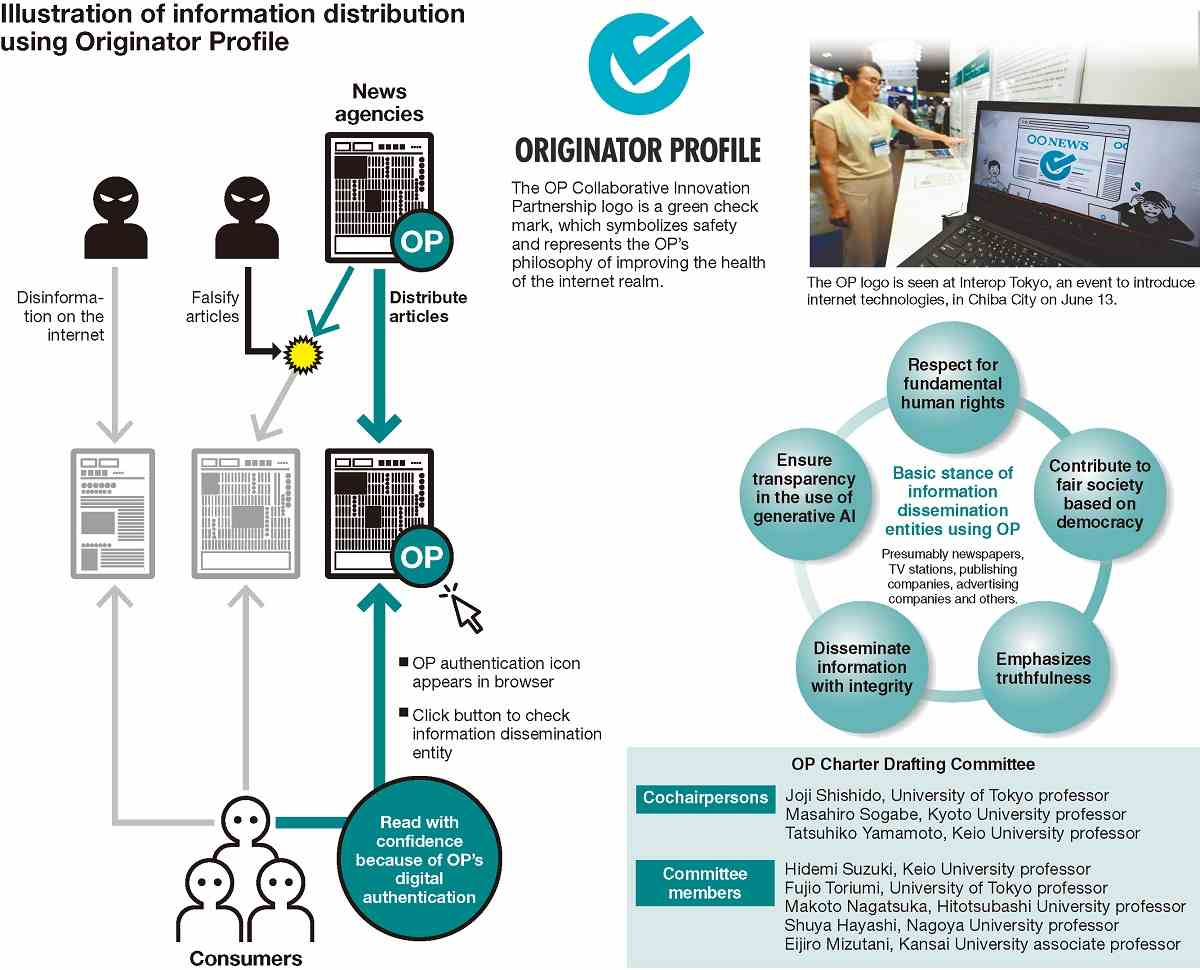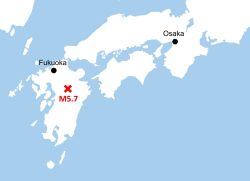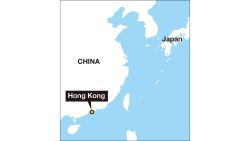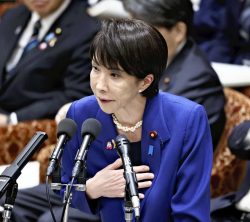Originator Profile Charter Established, Defines Principles For OP Technology to Confirm Sources of Online Information

7:15 JST, June 28, 2024
The Originator Profile (OP) Charter, established Thursday, clearly defines norms for businesses and others involved in OP. In the internet realm, where fake news and extremist information abound, OP, which identifies the originator of information, serves as an indicator for finding trustworthy information. This promising new technology is steadily being prepared for practical application.
The charter was compiled by the Drafting Committee established last November as an advisory body to Keio University Prof. Jun Murai, who serves as president of the OP Collaborative Innovation Partnership, after nearly six months of discussions.
The committee consisted of eight experts on the state of the information realm and information policy, and was co-chaired by Keio University Prof. Tatsuhiko Yamamoto.
In the preamble, the committee expresses a sense of urgency over the information realm being inundated with information of unknown authenticity against the backdrop of the spread of the “attention economy,” in which extremist information is used to attract people’s attention and generate advertising revenue. It also expresses concern over the spread of generative AI, and explains why OP is needed.
Article 1 clearly defines OP as “an indicator for judging the authenticity and reliability of information and the entities that transmit it.” It is to be used by newspapers, TV stations and other information providers to prove that they are not being impersonated and that they are following their own information dissemination policy.
Article 2 clarifies what should be the basis of the policy established by each information dissemination entity using OP, such as respect for fundamental human rights and emphasis on truthfulness. In particular, the article pointed out that the media using OP have a great social responsibility for the dissemination and distribution of information.
Article 3 sets forth the criteria for examining information dissemination entities who use OP. The criteria would take into account the existence of an information dissemination policy as stipulated in Article 2, and whether appropriate governance has been established in accordance with its industry and type of operation.
Article 4 lists items that the partnership must comply with in order to maintain trust. The partnership must not discriminate against businesses participating in OP based on their political beliefs, and it must maintain independence from governments and specific organizations.
Article 5 stipulates what to do in the event of a problem arising. The Ethics Committee will be established when an information dissemination entity using OP repeatedly engages in problematic behavior, such as transmitting false or erroneous information. The committee may conduct necessary investigations and request the president of the partnership take measures such as restricting the use of OP.
Article 6 establishes procedures for review in advance so that the charter can be reexamined, bearing in mind changes in the social environment and the rapid progress of digital technology.
Expected to be used in 2025
The OP Collaborative Innovation Partnership, established in December 2022, was started by 11 corporations, including newspaper, media and ad technology companies. In July 2023, the partnership began experimental use of OP to confirm that the program works properly in a network environment isolated from the outside world.
The partnership has been working toward the international standardization of OP and became an official member of the World Wide Web Consortium (W3C), the international standards organization for the web, this past January. OP is expected to be put into practical use in 2025.
"Society" POPULAR ARTICLE
-

M4.9 Earthquake Hits Tokyo, Neighboring Prefectures
-

Israeli Tourists Refused Accommodation at Hotel in Japan’s Nagano Pref., Prompting Protest by Israeli Embassy and Probe by Prefecture
-

M7.5 Earthquake Hits Northern Japan; Tsunami Waves Observed in Hokkaido, Aomori and Iwate Prefectures
-

Tsukiji Market Urges Tourists to Avoid Visiting in Year-End
-

M5.7 Earthquake Hits Japan’s Kumamoto Pref., Measuring Upper 5 Intensity, No Tsunami Expected
JN ACCESS RANKING
-

Tokyo Economic Security Forum to Hold Inaugural Meeting Amid Tense Global Environment
-

Keidanren Chairman Yoshinobu Tsutsui Visits Kashiwazaki-Kariwa Nuclear Power Plant; Inspects New Emergency Safety System
-

Imports of Rare Earths from China Facing Delays, May Be Caused by Deterioration of Japan-China Relations
-

University of Tokyo Professor Discusses Japanese Economic Security in Interview Ahead of Forum
-

Japan Pulls out of Vietnam Nuclear Project, Complicating Hanoi’s Power Plans






















